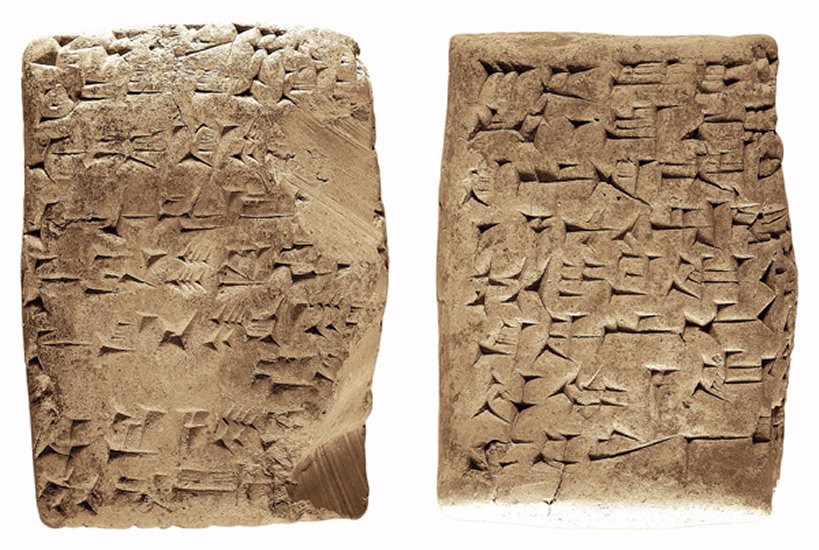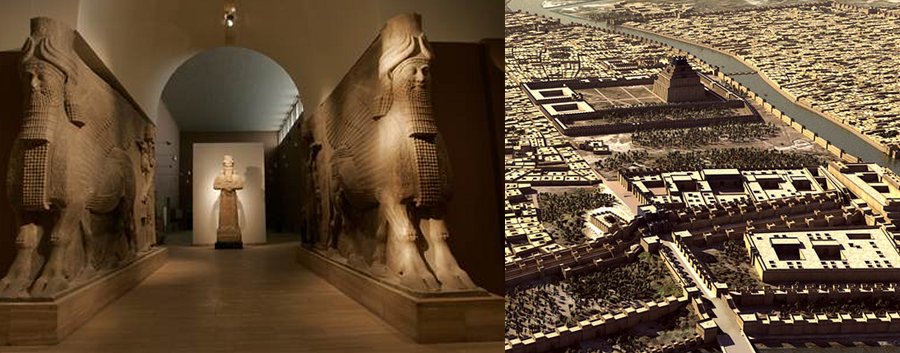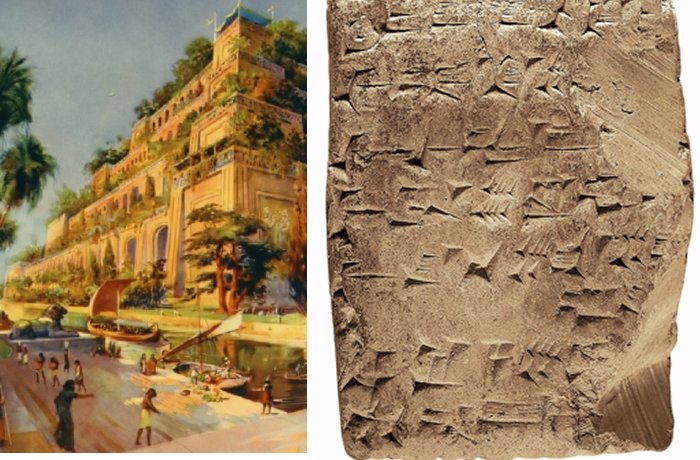Modern Banking Concept Started In Ancient Babylonian Temples
Ellen Lloyd - AncientPages.com - The history of banks can be traced to ancient Babylonian temples in the early 2nd millennium BC. In Babylon at the time of Hammurabi, there are records of loans made by the priests of the temple. Temples took in donations and tax revenue and amassed great wealth. Then, they redistributed these goods to people in need such as widows, orphans, and the poor.
After a thousand years, the priests who ran the temples had so much money that the concept of banking came up as an idea. Around the time of Hammurabi, in the 18th century BC, the priests allowed people to take loans. Old Babylonian temples made numerous loans to poor and entrepreneurs in need. Among many other things, the Code of Hammurabi recorded interest-bearing loans.
Cuneiform tablet detailing a loan of silver, c. 1800 BC. The text reads:
“3 1/3 silver sigloi, at interest of 1/6 sigloi and 6 grains per sigloi, has Amurritum, servant of Ikun-pi-Istar, received on loan from Ilum-nasir. In the third month she shall pay the silver.”
1 sigloi=8.3 grams.
The loans were made at reduced below-market interest rates, lower than those offered on loans given by private individuals, and sometimes arrangements were made for the creditor to make food donations to the temple instead of repaying interest. Cuneiform records of the house of Egibi of Babylonia describe the families financial activities dated as having occurred sometime after 1000 BC and ending sometime during the reign of Darius I, show a "lending house" a family engaging in "professional banking."
In ancient Egypt and Mesopotamia gold was deposited in temples for safe-keeping. There were three types of banks operating within Egypt, royal and private.
See also:
Our 7-Day Week Can Be Traced To Babylonians Who Started Using It 4,000 Years Ago
Food And Clothing Of Middle Class Of The Sumerian Society
What Did Houses For Ordinary People In Sumer Look Like?'
During the whole Graeco-Roman period (332 B.C. - 642 A.D.), banks were of three types, either privately run, leased, or owned by government, of which included within this last group were some organizations having dual roles including being additionally treasury departments. The recording of the gathering of money to buy grain in a pharaoh's kingdom as ordered by the Biblical Joseph, is written within the book Genesis of the Bible, and this money was placed within the house of the pharaoh. Joseph bought with the money of the pharaoh a large amount of corn, having this then laid in the public granaries.
In ancient Greece, private entrepreneurs, as well as temples and public bodies, undertook financial transactions. They took deposits, made loans, changed money from one currency to another and tested coins for weight and purity.
They even engaged in book transactions. Money lenders accepted payment in one Greek city and arranged for credit in another, avoiding the need for the customer to transport or transfer large numbers of coins.
Ancient Rome adopted the banking practices of Greece. So, the history of banking can be traced to very ancient times.
If you are interested in the history of money, don't miss our comprehensive article on the subject:
Our Lives Have Always Been Manipulated By Money – Part 1 - 3
Written by: Ellen Lloyd - AncientPages.com
Copyright © AncientPages.com All rights reserved. This material may not be published, broadcast, rewritten or redistributed in whole or part without the express written permission of AncientPages.com
Expand for referencesMore From Ancient Pages
-
 On This Day In History: Moscow Armistice Signed Between Finland And Soviet Union – On Sep 19, 1944
News | Sep 19, 2016
On This Day In History: Moscow Armistice Signed Between Finland And Soviet Union – On Sep 19, 1944
News | Sep 19, 2016 -
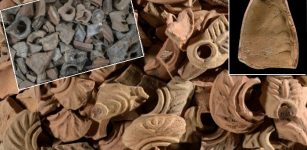 1,500-Year-Old Fingerprints Will Say Much About Potters And Communities That Once Lived In Motza
Archaeology | Nov 10, 2022
1,500-Year-Old Fingerprints Will Say Much About Potters And Communities That Once Lived In Motza
Archaeology | Nov 10, 2022 -
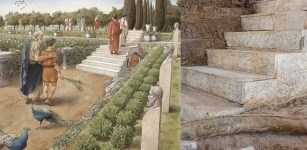 Lavish Home And Exotic Garden Of Emperor Caligula Discovered In Rome
Archaeology | Nov 19, 2020
Lavish Home And Exotic Garden Of Emperor Caligula Discovered In Rome
Archaeology | Nov 19, 2020 -
 Pharos Of Alexandria – One Of The First Lighthouses In The Ancient World
Featured Stories | Sep 1, 2015
Pharos Of Alexandria – One Of The First Lighthouses In The Ancient World
Featured Stories | Sep 1, 2015 -
 Florida’s Windover Bog Bodies Predate The Egyptian Pyramids And Can Rewrite Ancient American History
Featured Stories | Jun 3, 2021
Florida’s Windover Bog Bodies Predate The Egyptian Pyramids And Can Rewrite Ancient American History
Featured Stories | Jun 3, 2021 -
 On This Day In History: Unbelievable Flight Took Place – On Apr 28, 1939
News | Apr 28, 2016
On This Day In History: Unbelievable Flight Took Place – On Apr 28, 1939
News | Apr 28, 2016 -
 LIDAR Advanced Technology Spotted Rare Pre-Columbian Florida Village – Highly-Prized Producer Of Beads
Archaeology | Nov 10, 2019
LIDAR Advanced Technology Spotted Rare Pre-Columbian Florida Village – Highly-Prized Producer Of Beads
Archaeology | Nov 10, 2019 -
 7,000-Year-Old Native American Underwater Burial Site Discovered Off The Coast Of Florida
Archaeology | Mar 3, 2018
7,000-Year-Old Native American Underwater Burial Site Discovered Off The Coast Of Florida
Archaeology | Mar 3, 2018 -
 Mystery Of Mexico’s Bizarre Mummy May Never Be Solved
Featured Stories | Sep 17, 2024
Mystery Of Mexico’s Bizarre Mummy May Never Be Solved
Featured Stories | Sep 17, 2024 -
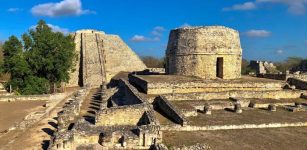 Climate, Conflict, Collapse: How Drought Destabilized The Last Major Precolonial Mayan City
Featured Stories | Jul 25, 2022
Climate, Conflict, Collapse: How Drought Destabilized The Last Major Precolonial Mayan City
Featured Stories | Jul 25, 2022 -
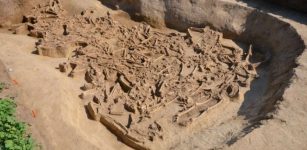 Gruesome Discovery Of Headless Bodies In Vráble, Slovakia – Remains Of Stone Age Cult Victims Unearthed
Archaeology | Sep 24, 2022
Gruesome Discovery Of Headless Bodies In Vráble, Slovakia – Remains Of Stone Age Cult Victims Unearthed
Archaeology | Sep 24, 2022 -
 3,000-Year-Old Fortress Built By The Mysterious Votadini Tribe Discovered On Top Of Arthur’s Seat
Archaeology | Sep 11, 2020
3,000-Year-Old Fortress Built By The Mysterious Votadini Tribe Discovered On Top Of Arthur’s Seat
Archaeology | Sep 11, 2020 -
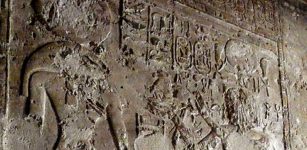 Pakhet ‘Night Huntress’: Egyptian War-Like Lioness Goddess Associated With Artemis
Egyptian Mythology | Mar 4, 2019
Pakhet ‘Night Huntress’: Egyptian War-Like Lioness Goddess Associated With Artemis
Egyptian Mythology | Mar 4, 2019 -
 Mesopotamian God Nabu Inscribed The Human Fates Determined By The Gods
Featured Stories | Aug 7, 2018
Mesopotamian God Nabu Inscribed The Human Fates Determined By The Gods
Featured Stories | Aug 7, 2018 -
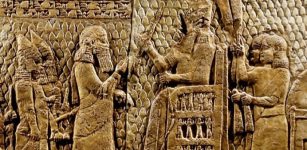 Lost Kingdom Of Idu And Its Seven Unknown Kings
Civilizations | Jul 25, 2023
Lost Kingdom Of Idu And Its Seven Unknown Kings
Civilizations | Jul 25, 2023 -
 Unknown 500,000-Year-Old Migration Route Of Homo Erectus From Africa – Discovered
Archaeology | May 10, 2019
Unknown 500,000-Year-Old Migration Route Of Homo Erectus From Africa – Discovered
Archaeology | May 10, 2019 -
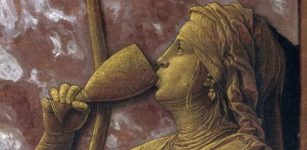 What Happened To Drunken Women In Ancient Rome?
Featured Stories | Aug 30, 2023
What Happened To Drunken Women In Ancient Rome?
Featured Stories | Aug 30, 2023 -
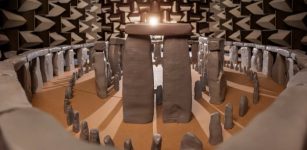 Ancient Sound Of Stones – Acoustics At Stonehenge Tested By Scientists
Ancient Technology | Aug 29, 2020
Ancient Sound Of Stones – Acoustics At Stonehenge Tested By Scientists
Ancient Technology | Aug 29, 2020 -
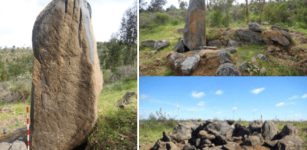 Mysterious Huge Megalithic Complex Of 500 Stones Discovered In Spain Could Be One Of The Largest In Europe
Archaeology | Aug 19, 2022
Mysterious Huge Megalithic Complex Of 500 Stones Discovered In Spain Could Be One Of The Largest In Europe
Archaeology | Aug 19, 2022 -
 Modern Humans Did Not Enter Europe By Sea – New Study Says
Archaeology | Mar 7, 2022
Modern Humans Did Not Enter Europe By Sea – New Study Says
Archaeology | Mar 7, 2022

